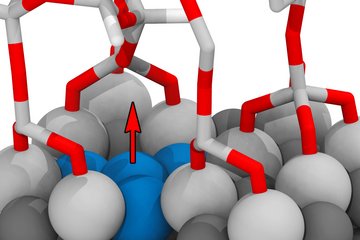All genres
201.
Talk
Combined In-Situ IRRAS and Kelvin Probe Studies of Plasma Modifications on Polymers and Metals. COST 527 Workshop, Sant Feliu, Spain (2004)
202.
Talk
Spectroscopic, microscopic and electrochemical studies of adhesion promoting thin layers at polymer/metal interfaces. Kurt-Schwabe-Symposium, Helsinki, Finnland (2004)
203.
Talk
Structure and stability of pigmented model latex coatings on iron. Kurt-Schwabe-Symposium, Helsinki, Finnland (2004)
204.
Talk
Non-destructive, real time in-situ measurement of de-adhesion processes at buried adhesive/metal interfaces by means of a new Scanning Kelvin Probe Blister Test. Annual Meeting of the American Adhesion Society, Wilmington, UK (2004)
205.
Talk
Application of the Scanning Kelvin Probe for the study of de-adhesion processes at thin film engineered adhesive/metal interfaces. Annual Meeting of the American Adhesion Society, Wilmington, UK (2004)
206.
Talk
Surface Modification of Iron based Alloys for Improved Corrosion Resistance and Adhesion. 13th Asian Pacific Corrosion Control Conference, Corrosion Symposium in NIMS, Tsukuba, Japan (2003)
207.
Talk
Spectroscopic, microscopic and electrochemical investigations of protective model latex films on iron. GDCH Jahrestagung, München, Germany (2003)
208.
Talk
Spectroscopic, microscopic and electrochemical investigations of protective model latex films on iron. ECASIA, Berlin, Germany (2003)
209.
Talk
Tailored adhesion promoting and corrosion resistant ultra-thin plasma polymer films at polymer/metal interfaces. EVC, Berlin, Germany (2003)
210.
Talk
Scanning Kelvin Probe measurements of electrode potentials at adhesive/metal interfaces in corrosive environments. Bunsentagung, Kiel, Germany (2003)
211.
Talk
Spectroscopic and Microscopic Analysis of Thin SiO2 Combustion CVD layers for Surface Engineering of Galvanised Steel. EURADH 2002, Glasgow, UK (2002)
212.
Talk
Tailored thin plasma polymers for the corrosion protection of metals. Conference on Plasma Surface Engineering (PSE), Garmisch Partenkirchen, Germany (2002)
213.
Talk
Study of electrochemical behaviour of MgZn2 with respect to its effect on the corrosion of Mg-containing zinc coatings on steel. ISE 2002, Düsseldorf, Germany (2002)
214.
Talk
Degradation of strained organic coatings. 15th International Corrosion Congress, Granada, Spain (2002)
215.
Talk
Plasma polymerisation and combustion CVD for the deposition of corrosion resistant thin interfacial films for polymer coated metals. GRC on Aqueous Corrosion 2002, New London, NH, USA (2002)
216.
Talk
Spectroscopic and Microscopic Analysis of Thin SiO2 Combustion CVD layers for Surface Engineering of Galvanised Steel. Conference Proceedings, Adhesion and Surface Analysis, Loughborough, UK (2002)
217.
Talk
Tailored Thin Plasma Polymer Films for Surface Engineering of Zinc Coated Steel. ECSC STEEL WORKSHOP "Galvanizing of Steel Strip", Luxembourg, Luxembourg (2002)
218.
Talk
Versagen von Beschichtungssystemen auf Metallen aufgrund von korrosiver Belastung. GUS Diskussionstage "Feuchtklimasicherheit elektronischer Schaltungen", Gesellschaft für Umweltsimulation e.V. (GUS), München, Germany (1998)
219.
Conference Report
EXAFS investigations of functionalized ZnO(0001) surfaces. 5th DELTA User-Meeting, Dortmund, Germany, November 25, 2009., (2009)
220.
Poster
Temperature Stabilised surface reconstructions at polar ZnO(0001). Gordon Research Seminar ''Corrosion - Aqueous'', Colby-Sawyer College, New London, NH, USA (2010)











